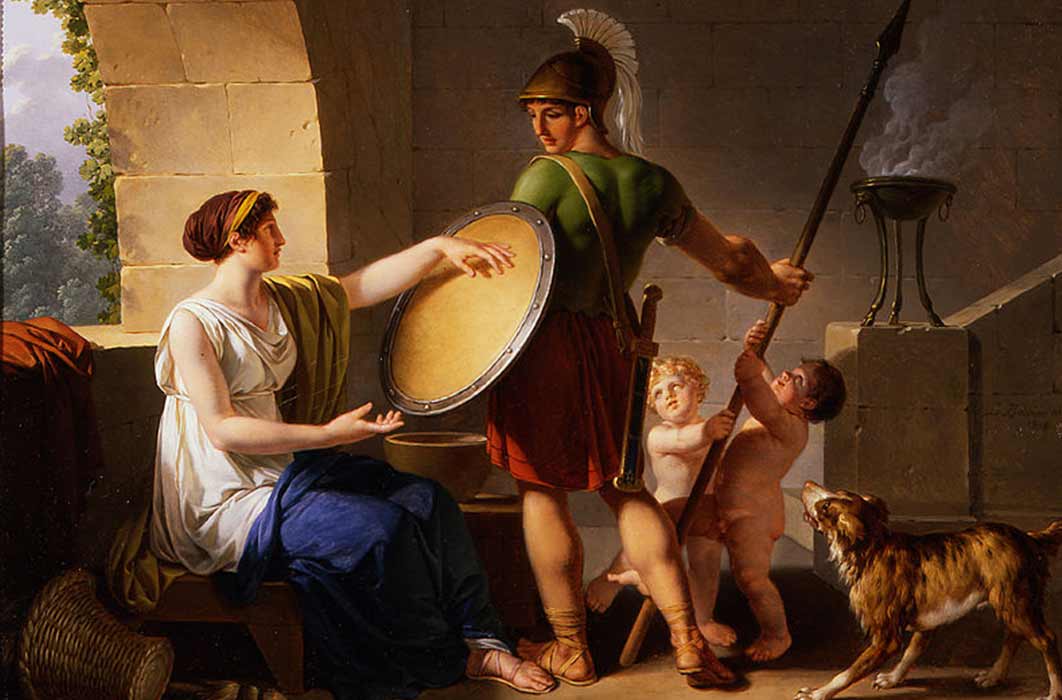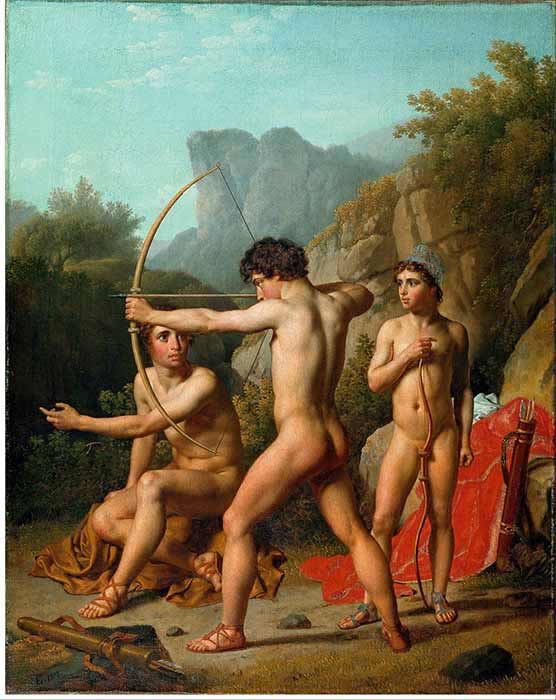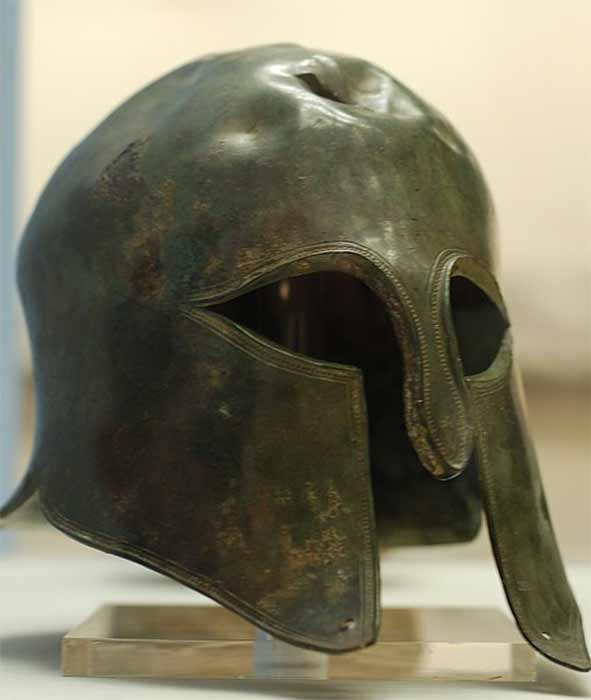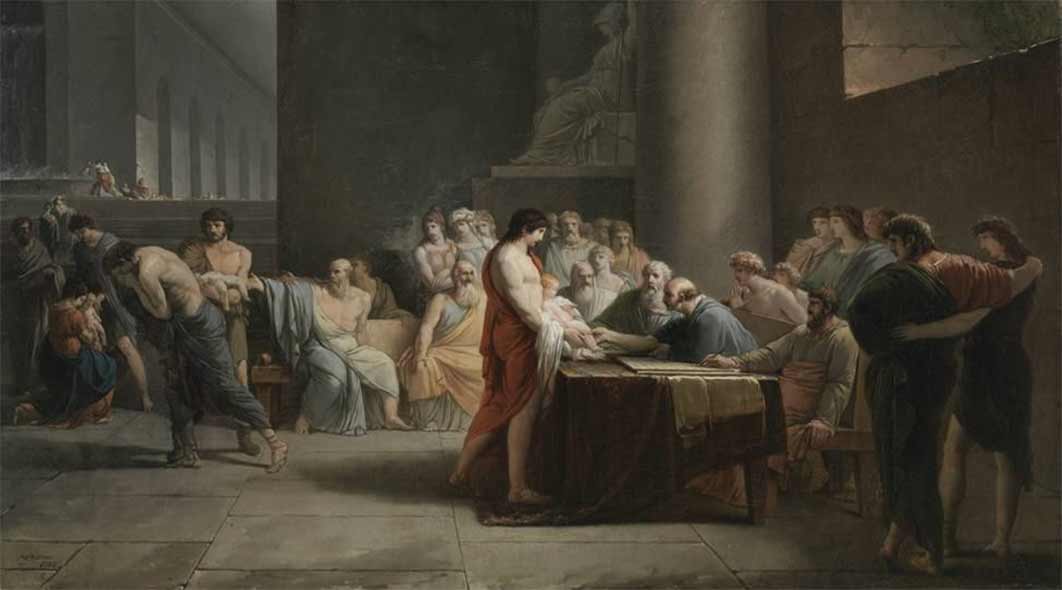
Antiquity’s Fierce Child Warriors Who Died For Their Tribes
Standing at the spearhead of many of history's greatest battles were battalions of grotesque weapon wielding, combat-trained children, as ready and willing as their parents to die for their city-states, families and tribes. Modern media generally show painful images of child soldiers in Africa, Asia or South-America adorning camo-clothing, wielding automatic machine guns bigger than themselves. Child soldiers is not a new concept, and most of history's greatest armies ‘got them in young.’ Thus, ancient records brim with references to rigorous training camps and regimens undergone by the children, who were never allowed to be as such.

Three Spartan boys practicing archery by Christoffer Wilhelm Eckersberg (1812) Hirschsprung Collection (Public Domain)
Child Spartans: Sixth – Fourth Century BC
Sparta was a warrior city-state of ancient Greece that had developed into a serious military land-based power by 650 BC. Spartan warriors, the ‘Lacedaemonians’ underwent training known as 'agoge’ which can be compared to the most elite level of modern special forces training. Their valor is showcased in the 2006-Hollywood blockbuster, 300, based on the ‘Battle of Thermopylae’, where that number of Spartan warriors allegedly staved off a vastly superior force of invading Persians, for three days of intense fighting, before all 300 men were killed.

This iconic Spartan helmet, on display at the British Museum, has been damaged and the top after sustaining a blow in battle. (CC BY-SA 2.0)
Spartan warriors were so fierce that they fought only with a large bronze shield, a long spear, and a small sword for close combat stabbing and jabbing. These three weapons could be easily manipulated, allowing the warriors to maneuver into a phalanx formation. In military science, this linked-shield wall of armed infantry, standing shoulder to shoulder in several rows, was a battle tactic that was specifically developed by the Spartans. So successful was this strategy that it survived up until the mass production of firearms. The Spartan army's core force were the Spartiates, who, according to Stephen Hodkinson’s 1996 exploration of Spartan training, ‘Agoge’, were ‘forbidden to learn and exercise any other trade.’ In the Archaic period, 700 - 600 BC, their education was entirely structured around military requirements. According to Plutarch, adulthood was reached at the age of 18, and the young adult (eiren) initially served as a trainer of the boys.

The Selection of Children in Sparta by Jean-Pierre Saint-Ours (1785) (Public Domain)
The Spartiate were subdivided into different age groups with the boys younger than 20 years old regarded as the weakest link due to their lack of fighting experience. At 18, the strongest and most promising youths entered Krypteia, an ancient Spartan state institution which sent the youths into the countryside for two years to fend for themselves in the wild. Survivors would become full blown soldiers when they turned 20 years old and they joined one of the messes (syssitia), comprising 15 men of various ages. The Spartiate adhered to a training regime so strict that Plutarch recorded that the warriors were ‘the only men in the world to whom war brought a respite in the training for war.’ Spartans’ shields or hoplon could measure one meter (3.2 feet) in length and could have been decorated with family or tribal or the Λ-Lamba sign for Lacedaemon. They wore a bronze helmet with a crest and a spear measuring two-and-a-half meters long (8.2 feet). Herodotus said Spartan warriors were known to wear long hair as a symbol of ‘a free man.’




